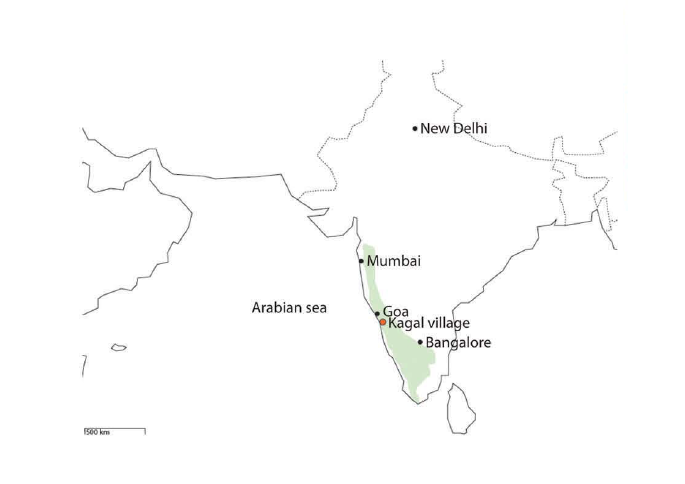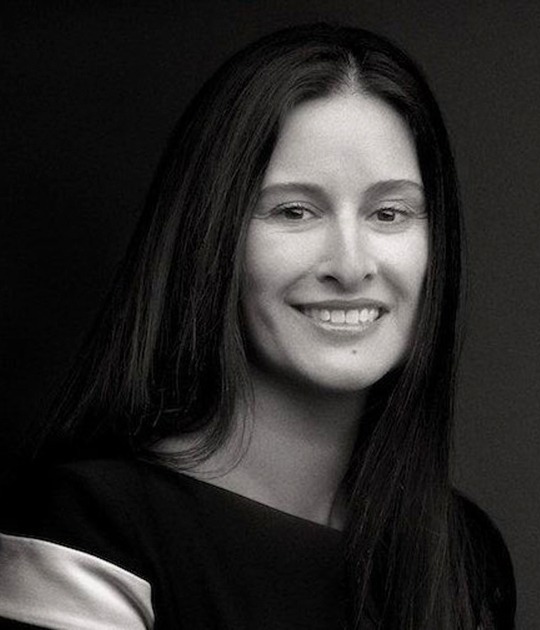Western Ghats. The start of the spring semester 2012 was a three weeks workshop placed in Kagal close to the coastal city of Kumta in the Indian state of Kanataka. The surrounding coastal regions of Uttara Kannada are embedded between the Arabian Sea and the Western Ghats. The Western Ghats, is a 1600 km long mountain range on the western side of the indian continent with a maximum elevation of 1200 meters. This mountainrange is one of the worlds ten "biodiversity hotspots" with 5000 species of fiowering plants, 139 mammal species, 508 bird species and 179 amphibian species.
On a 14 km long beach in this biodiversity hotspot, many kilometers away from the tourist beaches of Goa, and the noisy, polluted and vibrating mega city regions, a team consisting of experts of various fields, students and volunteers was formed under the authority of the Panchabhuta Conservation Foundation. By combining science, technology and activism the aim of the foundation is to develop locally anchored products that minister sustainability on all levels. It is from these grounds the Hut-to-hut prototype grows. In order to produce these products nurturing the design process has been a search among varieties of knowledge.
Water. Water in local wells is salty, and is used for animals, gardening and washing. The huts will featured with rainwater collectors for showers. The fresh mountain spring water is to be distributed in to the village for easier household use.
The concept of the hut. As commercial tourism in India is developing, the untouched places and pristine ecosystems are declining. The coastal villages are replaced by hotel complexes and the nature of former untouched places is on its way to become a framing for the tourism industry instead of being its own. It becomes hard to change the direction of upper and middle-class tourism pointing towards a commercial movement. Establishing projects that are affecting the "bottom of the pyramid", and try to make people think of a more sustainable way of living might be a way to rewrite the future of the few last quiet retreats on earth. This is where the Panchabhuta foundation and Eco-Tourism are rooted.
Eco-Tourism. Ecotourism is a form of tourism involving visiting fragile, pristine, and usually protected areas, intended as a low impact and often small scale alternative to standard commercial tourism. Its purpose may be to educate the traveler, to provide funds for ecological conservation, to directly benefit the economic development and political empowerment of local communities, or to foster respect for different cultures and for human rights.

Site plan.
While other concepts of tourism have faced declines due to reasons such as the financial crisis, ecotourism continues to expand. In fact, it is today the fastest growing segment of the tourist industry. Several standards and certificates are developed to secure an honest development of the section. Nevertheless, one must suspect a certain degree of inflation within the ecotourism term. As ecotourism is "responsible travel to natural areas that conserves the environment and improves the well-being of local people." (TIES, 1990) it is an approach that caters for a sensible line of action. How to make sure it meets the objectives?
Ecotourism is a paradox: The more popular it gets, the more difficult it is not having a cultural or environmental impact. Even though having the best of intensions, you interfere with systems containing vulnerable mechanisms. In this context you can't really be conscious enough. As more people visit a natural location, the bigger the odds of degrading local eco-systems and biodiversity gets.
The ability for the project to engage the local community will be a key issue in order to accomplish its goals. One of the intentions is to create new local livelihoods while sustaining the existing ones. There are good possibilities for local people to generate income and new knowledge from both tourism and conservation of the environment. Tourism will also generate money to enhance local infrastructure. Nevertheless, there are some obstacles as corruption and other power structures may be revealed. How can you make sure the economic benefits of such projects does not go to the elite or govemment officials?
Another interesting aspect is the scenario where an eco-tourist business is starting to place its wounds in the environment, but still very financial favourable. Will the business reduce its activity in order to secure the surroundings, or will the temptation of further economic development get too big?
When standing in a so to say untouched area like Kagal, it is tempting to ask the question if this place wouldn't be better off without any tourism. Is the balance between ecology, economy and local culture that ecotourism seeks even possible to tune? Could ecotourism become nothing more than a cloak to develop and da~ge the last pieces of true, untouched nature?










































